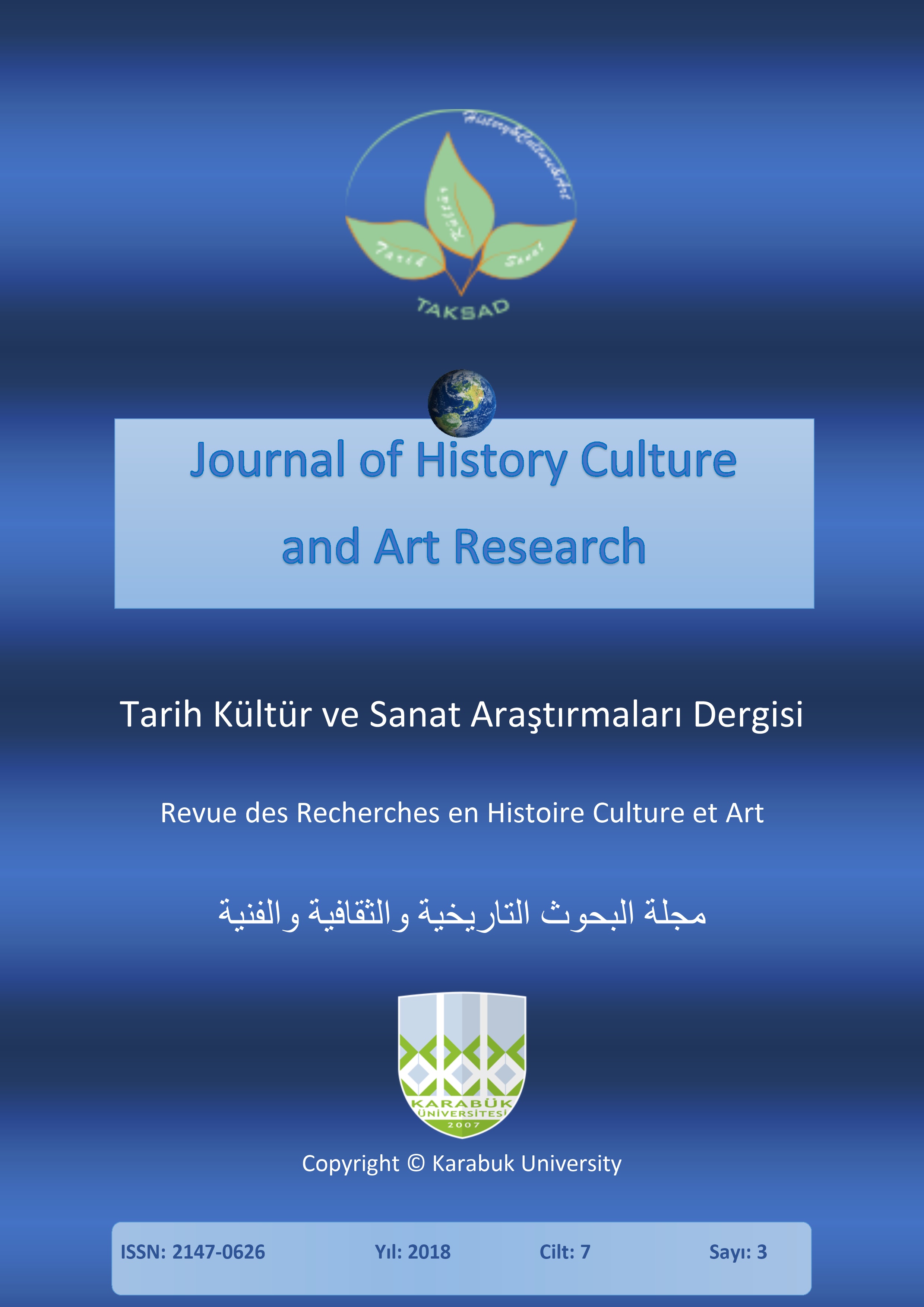Locating Urban Catalyst Projects in Inefficient Urban Textures with the Regeneration Approach: A Case Study on Tehran
DOI:
https://doi.org/10.7596/taksad.v7i3.1708Keywords:
Urban inefficient and old texture, Development stimulus projects, Urban regeneration, Tehran, AHP model.Abstract
Considering inefficient and old textures and also resolving their instabilities, urban regeneration has become a serious and pivotal subject, in a way that has directed the related organizations to organize and recreate textures and brought up the necessity of intervention. Regarding the regeneration, formation of inefficient urban textures and formation of development stimulus can be a suitable approach for this aim. In these regards, distinguishing utilized zones for implementing development stimulus can be a suitable way to improve the conditions of inefficient textures. The aim of present study with analytic-descriptive approach, is to use 13 social and physical criteria in AHP model framework and perform zoning of area number one in region eighteen in Tehran for locating urban renovating projects. The results of accomplished in the framework of studied case, demonstrates that 2.17 hectare (14.8 percent) of the lands in old texture, show the least amount of capabilities for regeneration (northern parts of area 1 in region 18 in Tehran) and in opposite, 1.13 hectare (7.7 percent) of the studied area, have the most capability for implementing regeneration projects (northern part of Ferdows neighborhood).References
Al-Shalabi, M. A.; Mansor, S. B.; Ahmed, N. B. & Shiriff, R. (2006). GIS Based Multicriteria Approaches to Housing Site Suitability Assessment. XXIII FIG Congress Munich, Germany, October 8-13, 2006.
Andalib, A.; Bayat, A. & Rasooli, L. (2013). Comparison & Adaptation of Urban Old Textures of Khayam Block in Tehran (Iran) and Liverpool Project (Britain). Amayesh & Mohit Periodical, 23, 70-104.
Attoe, W. & Logan, D. (1989). American Urban Architecture: Catalysts in the Design of Cities. California: University of California Press.
Bacon, E. N. (1997). Design of Cities. Translation by Farzaneh Taheri, Iran Study & Research Center of Urbanization & Architecture.
Blakeley, G. & Evans, B. (2009). Who Participates, How and Why in Urban Regeneration Projects? The Case of the New City of East Manchester. Social Policy & Administration, 43(1), 15-32.
Bohannon, C. L. (2004). The urban catalyst concept: toward successful urban revitalization. Master Thesis of Landscape Architecture. Virginia.
Detailed Layout of Region 18 in Tehran (2013). Farnahad Urban Planner and architecture engineers.
Habibi, M. & Maghsoodi, M. (2007). Urban Restoration: Definitions, Theories, Experiences, Universal Prisms and Statements. Urban Methods & Measures. Tehran: Tehran University Publication.
Izadi, M. S. (2010a). Development stimulus, a solution for the realization of creation programs of neighborhoods and urban centers. Periodical of urbanization and architectural queries, 32, 25-28.
Izadi, M. S. (2010b). Universal factors of regeneration policy. Haft shahr urbanization and architecture journal, 33&34, 3-5.
Izadi, M. S. & Feizi, R. (2012). Urban Regeneration, A comprehensive and integrated interaction in target areas of urban renewal and improvement. Haft shahr urbanization and architecture journal, 35&36, 73-80.
Karimi Moshvaer, M. (2015). Framework of Documentation and Evaluation of Development Stimulus Projects (Akhoond Neighborhood, Ghazvin). Ministry of Roads & City Planning, Iran's Civil and Urban Rehabilitation, BouAli University Study Plan.
Kiani, A.; Sardari, S.; Farali, A. R. & Sadegh, M. (2009). The Study of Identity of Firouzabad in improvement and Renewal of Historic Texture of Goor City With the Use of SWOT technique. Amayesh & Mohit Periodical, 6, 120-138.
Lotfi, S. & Zargari Marandi, E. (2010). Urban Regeneration and redefinition of Exhaustion Criteria: A beginning for Sustainable Urban Restoration. Two Urbanist Periodicals, 58, 14-25.
Malczewski, J. (1999). Spatial Multi Criteria Decision Analysis. In J. C. Thill (Ed.), Spatial Multicriteria Decision Making and Analysis: A Geographic Information Sciences Approach. Brookfield: Ashgate publishing.
McDonald, S.; Malys, N. & Maliene, V. (2009). Urban Regeneration for Sustainable Communities: A Case Study. Baltic Journal on Sustainability, 15(1), 49-59.
Montgomery, J. (2003). Cultural quarters as mechanism for urban regeneration. Part I: conceptualizing cultural quarters. Planning, practice & research, 18(4), 293-306.
Pourahmad Habibi, K. & Keshavarz, M. (2010). Evolution Process of Urban Regeneration Conceptualization as a Modern Approach in Urban Old Textures. Islamic Iranian Urban Studies Periodical, 1, 73-93.
Roberts, P. (2000). The Evolution, Definition and Purpose of Urban Regeneration. In Roberts, P., & Sykes, H. (eds.). Urban Regeneration: A Handbook. London: Sage.
Saaty, T. L. (1980). The analytic hierarchy process: planning, priority setting, resource allocation. New York/London: McGraw-Hill International Book Co.
Sajadzadeh, H. & Zolfi Gol, S. (2015). Urban Planning in Regeneration of Traditional Neighborhoods with Approach of Development Stimulus, Case Study: Golpa Neighberhood in Hamedan. Amayesh Mohit Periodical, 31, 147-171.
Stumpp, E. M. (2013). New in town? On resilience and “Resilient Cities”. Cities, 32, 164-166.
Taheri, N. & Taghvaei, F. (2012). Development Stimulus Projects, a Step in Qualitative Improvement of Urban Spaces, Case Study: Imam Khomeini St, Yazd. Haft Shahr Journal, 41&42, 81-96.
Tofigh, F. (1993). A Multicriterion Evaluation in Physical Planning. Abadi Magazine, 11, 40-43.
Ülengin, B.; Ülengin, F. & Güvenç, Ü. (2001). A multidimensional approach to urban quality of life: The case of Istanbul. European Journal of Operational Research, 130(2001), 361-374.
Zangi Abadi, A. & Moaedfar, S. (2012). Urban Regeneration Approach in Old Textures: Six Windfall Locality in Yazd. Utopia Urbanization & Architecture Periodical, 9, 297-313.
Downloads
Published
How to Cite
Issue
Section
License
All papers licensed under Creative Commons 4.0 CC-BY.- Share — copy and redistribute the material in any medium or format
- Adapt — remix, transform, and build upon the material for any purpose, even commercially.
Under the following terms:
Attribution — You must give appropriate credit, provide a link to the license, and indicate if changes were made. You may do so in any reasonable manner, but not in any way that suggests the licensor endorses you or your use.
- No additional restrictions — You may not apply legal terms or technological measures that legally restrict others from doing anything the license permits.







